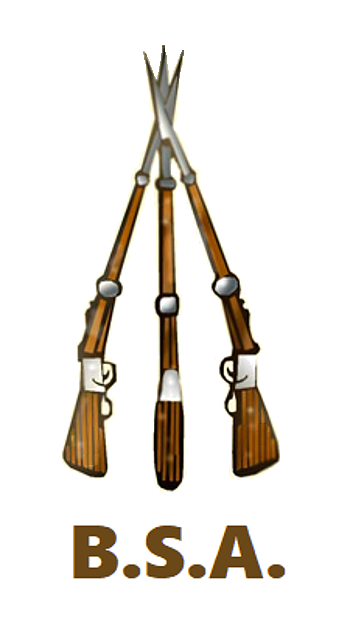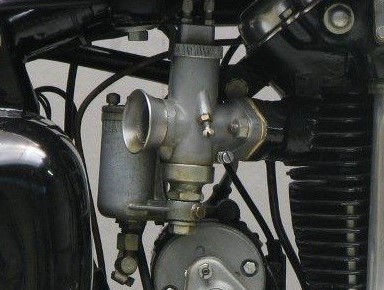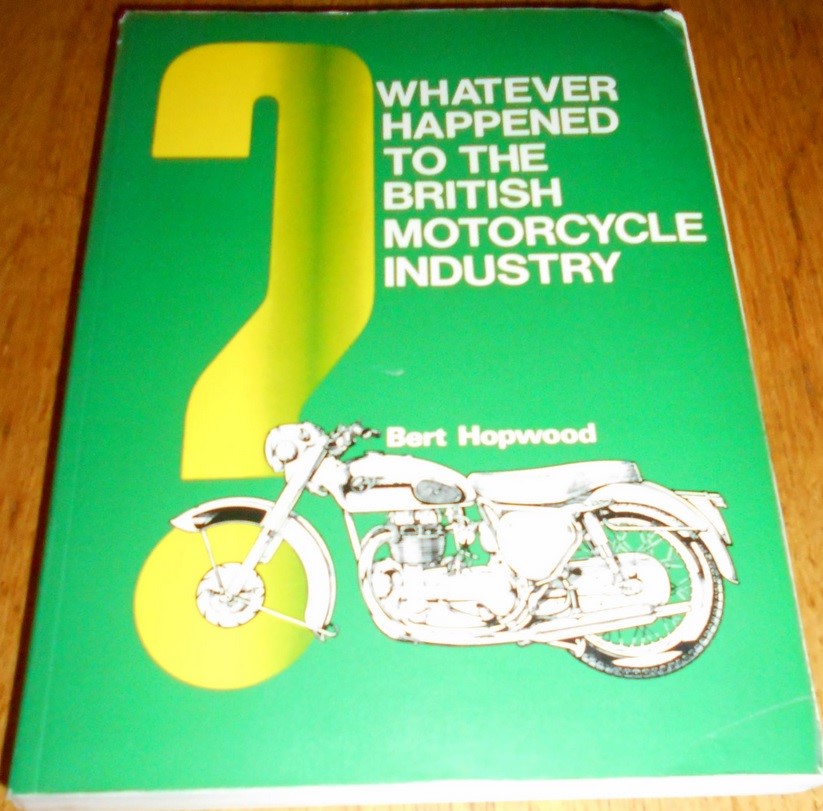|
BSA A7
The BSA A7 was a 500cc motorcycle model range made by Birmingham Small Arms Company (BSA) at their factory in Armoury Road, Small Heath, Birmingham. The range was launched in 1946 using a long stroke engine. An improved version based on the BSA A10 engine was launched in 1950. The various A7 models continued in production with minor modifications until 1961/2 when they were superseded by the unit-construction A50 model. Development After the 1938 launch of the Edward Turner designed Triumph Speed Twin, BSA needed a 500cc twin to compete with the Speed Twin. Designed by Herbert Parker, David Munro and BSA's chief designer, Val Page, the BSA A7 was the first of the BSA twin-cylinder motorcycles. The outbreak of World War II delayed the launch and several prototypes were built during the war years. The model was finally launched in September 1946 when hostilities had ended. The very first A7 off the production line was flown to Paris for the first motorcycle show after the en ... [...More Info...] [...Related Items...] OR: [Wikipedia] [Google] [Baidu] |
Birmingham Small Arms Company
The Birmingham Small Arms Company Limited (BSA) was a major British industrial combine, a group of businesses manufacturing military and sporting firearms; bicycles; motorcycles; cars; buses and bodies; steel; iron castings; hand tool, hand, power tool, power, and machine tool, machine tools; coal cleaning and handling plants; sintered metals; and hard chrome process. After the Second World War, BSA did not manage its business well, and a government-organised rescue operation in 1973 led to a takeover of such operations as it still owned. Those few that survived this process disappeared into the ownership of other businesses. History of the BSA industrial group Machine-made guns BSA began in June 1861 in the Gun Quarter, Birmingham, England. It was formed by a group of fourteen gunsmith members of the Birmingham Small Arms Trade Association specifically to manufacture guns by machinery. They were encouraged to do this by the War Office which gave the BSA gunsmiths free access ... [...More Info...] [...Related Items...] OR: [Wikipedia] [Google] [Baidu] |
Valve
A valve is a device or natural object that regulates, directs or controls the flow of a fluid (gases, liquids, fluidized solids, or slurries) by opening, closing, or partially obstructing various passageways. Valves are technically fittings, but are usually discussed as a separate category. In an open valve, fluid flows in a direction from higher pressure to lower pressure. The word is derived from the Latin ''valva'', the moving part of a door, in turn from ''volvere'', to turn, roll. The simplest, and very ancient, valve is simply a freely hinged flap which swings down to obstruct fluid (gas or liquid) flow in one direction, but is pushed up by the flow itself when the flow is moving in the opposite direction. This is called a check valve, as it prevents or "checks" the flow in one direction. Modern control valves may regulate pressure or flow downstream and operate on sophisticated automation systems. Valves have many uses, including controlling water for irrigation, ... [...More Info...] [...Related Items...] OR: [Wikipedia] [Google] [Baidu] |
Amal (carburettor)
AMAL was a British engineering company servicing the motorcycle and other light-engineering motor industries between 1927 and 1993Amalgamated Carburetters Grace's Industrial Guide. Retrieved 2013-07-09 based in . AMAL is a British trademark. Amal was the supplier of carburettors to many marques within the British motorcycle industry including the largest of British manufacturers, such as B ... [...More Info...] [...Related Items...] OR: [Wikipedia] [Google] [Baidu] |
Carburetor
A carburetor (also spelled carburettor) is a device used by an internal combustion engine to control and mix air and fuel entering the engine. The primary method of adding fuel to the intake air is through the venturi tube in the main metering circuit, however various other components are also used to provide extra fuel or air in specific circumstances. Since the 1990s, carburetors have been largely replaced by fuel injection for cars and trucks, however carburetors are still used by some small engines (e.g. lawnmowers, generators and concrete mixers) and motorcycles. Diesel engines have always used fuel injection instead of carburetors. Etymology The name "carburetor" is derived from the verb ''carburet'', which means "to combine with carbon," or in particular, "to enrich a gas by combining it with carbon or hydrocarbons." Thus a carburetor mixes intake air with hydrocarbon-based fuel, such as petrol or autogas (LPG). The name is spelled "carburetor" in American English ... [...More Info...] [...Related Items...] OR: [Wikipedia] [Google] [Baidu] |
Electrical Generator
In electricity generation, a generator is a device that converts motive power (mechanical energy) or fuel-based power (chemical energy) into electric power for use in an external circuit. Sources of mechanical energy include steam turbines, gas turbines, water turbines, internal combustion engines, wind turbines and even hand cranks. The first electromagnetic generator, the Faraday disk, was invented in 1831 by British scientist Michael Faraday. Generators provide nearly all of the power for electric power grids. In addition to electromechanical designs, photovoltaic and fuel cell powered generators utilize solar power and hydrogen-based fuels, respectively, to generate electrical output. The reverse conversion of electrical energy into mechanical energy is done by an electric motor, and motors and generators have many similarities. Many motors can be mechanically driven to generate electricity; frequently they make acceptable manual generators. Terminology Electromagnetic ... [...More Info...] [...Related Items...] OR: [Wikipedia] [Google] [Baidu] |
Ignition Magneto
An ignition magneto, or high-tension magneto, is a magneto that provides current for the ignition system of a spark-ignition engine, such as a petrol engine. It produces pulses of high voltage for the spark plugs. The older term ''tension'' means ''voltage''. The use of ignition magnetos is now confined mainly to engines where there is no other available electrical supply, for example in lawnmowers and chainsaws. It is also widely used in aviation piston engines even though an electrical supply is usually available. In this case, the magneto's self-powered operation is considered to offer increased reliability; in theory, the magneto should continue operation as long as the engine is turning. History Firing the gap of a spark plug, particularly in the combustion chamber of a high-compression engine, requires a greater voltage (or ''higher tension'') than can be achieved by a simple magneto. The ''high-tension magneto'' combines an alternating current magneto generator a ... [...More Info...] [...Related Items...] OR: [Wikipedia] [Google] [Baidu] |
Lucas Industries Plc
Lucas Industries plc was a Birmingham-based British manufacturer of motor industry and aerospace industry components. Once prominent, it was listed on the London Stock Exchange and was formerly a constituent of the FTSE 100 Index. In August 1996, Lucas merged with the American Varity Corporation to form LucasVarity. After LucasVarity was sold to TRW the Lucas brand name was licensed for its brand equity to Elta Lighting for aftermarket auto parts in the United Kingdom. The Lucas trademark is currently owned by ZF Friedrichshafen, which retained the Elta arrangement. History Foundation In the 1850s, Joseph Lucas, a jobless father of six, sold paraffin oil from a barrow cart around the streets of Hockley. In 1860, he founded the firm that would become Lucas Industries. His 17-year-old son Harry joined the firm around 1872. [...More Info...] [...Related Items...] OR: [Wikipedia] [Google] [Baidu] |
Chain
A chain is a serial assembly of connected pieces, called links, typically made of metal, with an overall character similar to that of a rope in that it is flexible and curved in compression but linear, rigid, and load-bearing in tension. A chain may consist of two or more links. Chains can be classified by their design, which can be dictated by their use: * Those designed for lifting, such as when used with a hoist; for pulling; or for securing, such as with a bicycle lock, have links that are torus shaped, which make the chain flexible in two dimensions (the fixed third dimension being a chain's length). Small chains serving as jewellery are a mostly decorative analogue of such types. * Those designed for transferring power in machines have links designed to mesh with the teeth of the sprockets of the machine, and are flexible in only one dimension. They are known as roller chains, though there are also non-roller chains such as block chains. Two distinct chains can be co ... [...More Info...] [...Related Items...] OR: [Wikipedia] [Google] [Baidu] |
Crankcase
In a piston engine, the crankcase is the housing that surrounds the crankshaft. In most modern engines, the crankcase is integrated into the engine block. Two-stroke engines typically use a crankcase-compression design, resulting in the fuel/air mixture passing through the crankcase before entering the cylinder(s). This design of the engine does not include an oil sump in the crankcase. Four-stroke engines typically have an oil sump at the bottom of the crankcase and the majority of the engine's oil is held within the crankcase. The fuel/air mixture does not pass through the crankcase in a four-stroke engine, however a small amount of exhaust gasses often enter as "blow-by" from the combustion chamber. The crankcase often forms the lower half of the main bearing journals (with the bearing caps forming the other half), although in some engines the crankcase completely surrounds the main bearing journals. An ''open-crank'' engine has no crankcase. This design was used in early ... [...More Info...] [...Related Items...] OR: [Wikipedia] [Google] [Baidu] |
Pre-unit Construction
Pre-unit construction, also called separate construction, is a motorcycle engine architecture where the engine and gearbox are separate components with their own oil reservoirs, linked by a driving chain within a primary chaincase. Mounting plates are usually attached to the frame allowing for chain adjustment by gearbox fore-and-aft movement and via screw adjusters and elongated mounting holes. Even though Singer offered an integrated engine and gearbox in a single casing in 1911, it was not until the 1950s that technical advances meant it was possible to reliably construct engines with integral gearboxes in a single unit, known as unit construction. Another variant is semi-unit construction, where the gearbox is bolted directly to the engine. Curiously, early BSA A10 and A7 parallel twins (650cc and 500 cc, respectively) were semi-unit construction, but the factory later adopted pre-unit construction. The term "pre-unit" was coined only after such engines were succeeded by "u ... [...More Info...] [...Related Items...] OR: [Wikipedia] [Google] [Baidu] |
Motorcycle Transmission
A motorcycle transmission is a transmission created specifically for motorcycle applications. They may also be found in use on other light vehicles such as motor tricycles and quadbikes, go-karts, offroad buggies, auto rickshaws, mowers, and other utility vehicles, microcars, and even some superlight racing cars. Manual gearing Most manual transmission two-wheelers use a sequential gearbox. Most motorcycles (except scooters) change gears (of which they increasingly have five or six) by a foot-shift lever. On a typical motorcycle, either first or second gear can be directly selected from neutral, but higher gears may only be accessed in order – it is not possible to shift from second gear to fourth gear without shifting through third gear. A five-speed of this configuration would be known as "one down, four up" because of the placement of the gears with relation to neutral, though some motorcycle gearboxes and/or shift mechanisms can be reversed so that a "one up, four down" shi ... [...More Info...] [...Related Items...] OR: [Wikipedia] [Google] [Baidu] |
Bert Hopwood
Herbert Hopwood (1908 – 17 October 1996) was a British motorcycle designer. He was, at least, partly responsible for some of the most influential designs for the British motorcycle industry and worked for Ariel, Norton, BSA and Triumph. Motorcycle design career Hopwood left school at an early age to work for Ariel under designer Val Page. Following Jack Sangster's purchase of Triumph in 1936, Hopwood moved there under Edward Turner and assisted with the design of the Triumph Speed Twin which influenced many motorcycles of the time and since. His success led to an offer from rival manufacturer Norton in April 1947, where he designed the 500cc Norton Dominator engine. This came to a somewhat acrimonious end when the Technical Director, Joe Craig, refused to release the complete machine for production, despite Norton's financial situation. This was based on the allegation that the engine lacked power and the performance was below par as a result. It was subsequently produced ... [...More Info...] [...Related Items...] OR: [Wikipedia] [Google] [Baidu] |






.jpg)


.jpg)

